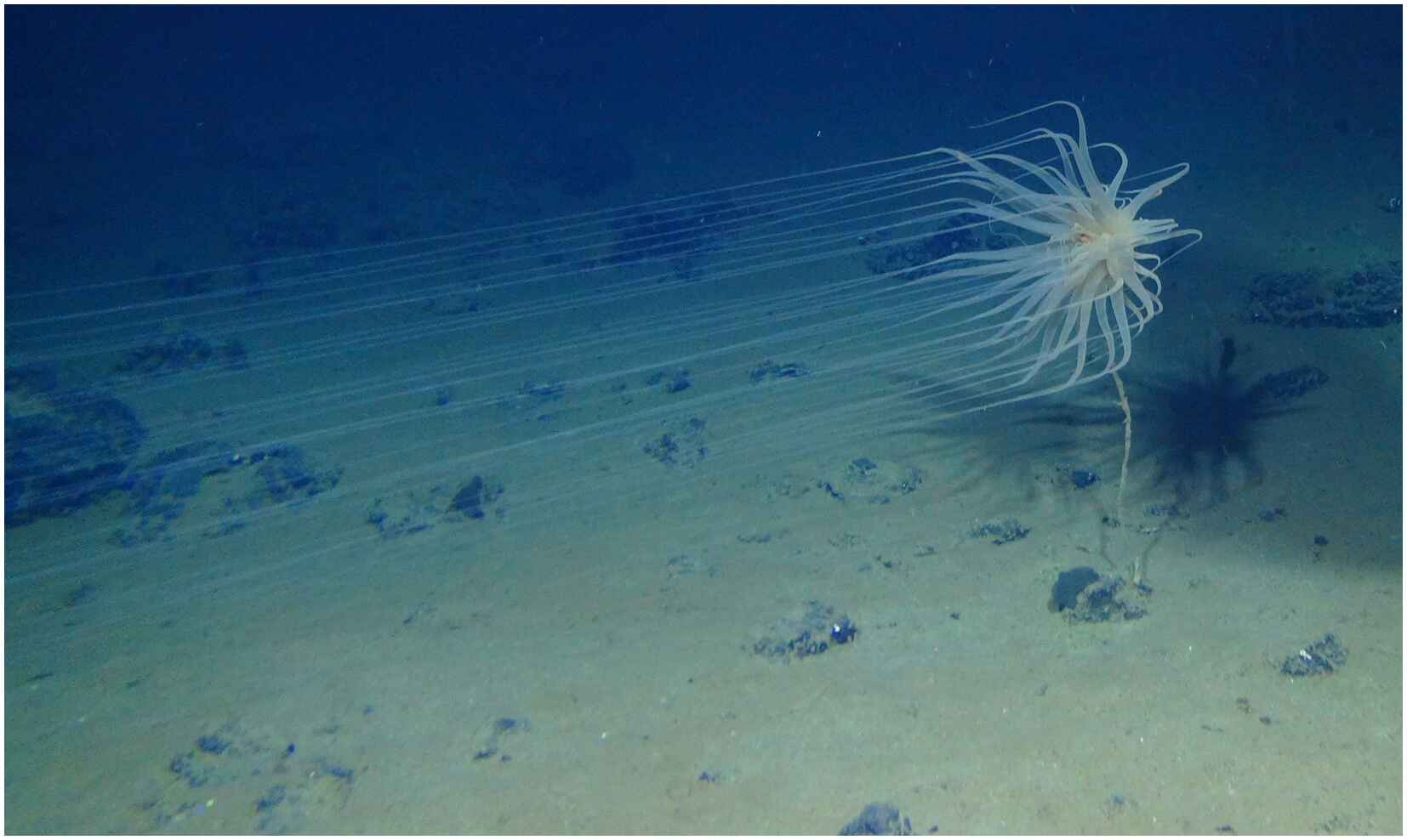
The Abyssal Plain, also known as the abyssal zone, is a fascinating and mysterious part of the ocean. It is an incredibly vast and seemingly endless stretch of flat, muddy seafloor that lies thousands of meters below the surface. This unique geographic feature covers a significant portion of the Earth’s ocean basins and is characterized by its extreme depth, low temperatures, and high pressure.
The Abyssal Plain is home to a diverse range of organisms specially adapted to thrive in this harsh environment. It is also an area of great scientific interest, as it offers valuable insights into the geological processes shaping our planet, the intricate marine ecosystems, and the potential for undiscovered life forms. In this article, we will delve into 20 intriguing facts about the Abyssal Plain, shedding light on its fascinating geological features, extraordinary marine life, and the ongoing scientific research being conducted to unravel its mysteries.
Key Takeaways:
- The abyssal plain is a massive, flat, and mysterious part of the ocean floor, home to unique marine life and valuable mineral deposits. It holds many secrets and continues to captivate the imagination of scientists and artists alike.
- Despite its extreme depths and harsh conditions, the abyssal plain plays a crucial role in the global carbon cycle, stores valuable information about Earth’s history, and serves as a critical habitat for deep-sea organisms. It is a fascinating and enigmatic part of our planet.
The abyssal plain is the largest and flattest part of the ocean floor.
Covering approximately 60% of the Earth’s surface, the abyssal plain is truly immense. Its flatness is due to the accumulation of fine sediments over millions of years.
It is located at depths between 3,000 and 6,000 meters.
These extreme depths make it one of the least explored areas on the planet.
The average temperature of the abyssal plain ranges from 2 to 4 degrees Celsius.
This chilling temperature remains relatively constant, regardless of the latitude or season.
The abyssal plain is home to a wide variety of marine life.
Despite the harsh conditions, many unique species have adapted to survive in this deep-sea environment.
It provides essential habitats for deep-sea organisms.
The abyssal plain serves as a critical refuge and feeding ground for numerous species, including deep-sea fishes, invertebrates, and microorganisms.
The abyssal plain is relatively devoid of light.
Due to its depth and lack of sunlight penetration, the abyssal plain is shrouded in eternal darkness.
It is influenced by underwater currents.
Powerful currents, such as the Antarctic Circumpolar Current, have a significant impact on the abyssal plain, transporting nutrients and shaping its landscape.
Sediment deposition on the abyssal plain is incredibly slow.
It can take thousands or even millions of years for sediments to accumulate and form the characteristic layers found on the abyssal plain.
The abyssal plain contains valuable mineral deposits.
Rich in manganese nodules, hydrothermal vents, and other mineral resources, the abyssal plain has attracted interest for potential mining activities.
It is home to fascinating geological features.
Seamounts, trenches, and underwater canyons can often be found on or near the abyssal plain, adding to its geological diversity.
The abyssal plain experiences extremely high pressure.
The immense weight of the seawater above creates pressure that can reach up to 50 times the atmospheric pressure at sea level.
It serves as a carbon sink.
The abyssal plain plays a crucial role in the global carbon cycle by storing vast amounts of organic matter and sequestering carbon dioxide from the atmosphere.
The abyssal plain is explored using remotely operated vehicles (ROVs).
These sophisticated robotic vehicles allow scientists to study the abyssal plain’s ecosystem and collect samples without physically descending to its extreme depths.
It reveals the Earth’s geological history.
The sediments found on the abyssal plain contain valuable information about past climate conditions, tectonic activity, and the evolution of marine life.
The abyssal plain is an important site for scientific research.
Scientists study the abyssal plain to gain insights into oceanography, geology, marine biology, and the impacts of climate change on deep-sea ecosystems.
The abyssal plain poses challenges for deep-sea exploration.
Extreme depths, high pressures, and harsh environmental conditions make researching the abyssal plain a formidable task.
It is part of the wider oceanic abyssal zone.
The abyssal plain is just one component of the larger abyssal zone that encompasses various deep-sea habitats around the world.
The abyssal plain is vulnerable to human activities.
Deep-sea mining, pollution, and climate change pose significant threats to the delicate balance of the abyssal plain’s ecosystem.
The abyssal plain has been featured in literature and art.
Its mysterious and awe-inspiring nature has captivated the imaginations of writers, artists, and filmmakers throughout history.
The abyssal plain continues to hold many secrets.
Despite scientific advancements, there is still much to discover and understand about this fascinating and enigmatic part of our planet.
In conclusion, the abyssal plain is a remarkable and intriguing feature of the Earth’s ocean floor. From its vast expanse to its unique marine life and geological wonders, it continues to unlock the secrets of our planet’s history. As we strive to protect and preserve the world’s oceans, the abyssal plain serves as a reminder of the incredible complexity and beauty that lies beneath the surface.
Conclusion
The Abyssal Plain is a fascinating feature of the ocean floor, characterized by its flat and deep expanses. It plays a crucial role in our understanding of the Earth’s geological processes and provides a unique habitat for diverse marine life. From its formation to the exploration of its secrets, the Abyssal Plain continues to captivate scientists and researchers. Its mysterious depths hold undiscovered wonders, waiting to be explored and studied further. As we continue to delve into the depths of the abyss, we unlock new knowledge and gain a deeper appreciation for the intricate workings of our planet.
FAQs
1. What is an Abyssal Plain?
An Abyssal Plain is a vast, flat region on the ocean floor, typically found in the deep sea. It is characterized by its depth, with water depths exceeding 3,000 meters (9,800 feet), and its relatively featureless topography.
2. How are Abyssal Plains formed?
Abyssal Plains are formed through the accumulation of sediment, including fine-grained particles of clay and silt, over millions of years. These sediments settle on the ocean floor, creating a smooth, flat surface. Volcanic activity, tectonic forces, and oceanic currents also play a role in shaping Abyssal Plains.
3. What organisms live in the Abyssal Plain?
The Abyssal Plain is teeming with life, despite the extreme conditions of darkness and high pressure. Unique species such as deep-sea fish, octopuses, deep-sea corals, and various types of bacteria and microorganisms have adapted to survive in this harsh environment.
4. Are there any resources found in the Abyssal Plain?
The Abyssal Plain holds vast potential as a source of valuable resources, including polymetallic nodules, manganese, cobalt, and rare earth elements. However, the extraction of these resources is still in the early stages and poses significant environmental challenges.
5. Can Abyssal Plains reveal information about Earth’s history?
Abyssal Plains are like time capsules that hold geological information about Earth’s history. By studying the sediments on the Abyssal Plain, scientists can learn about past climate changes, tectonic activity, and even uncover evidence of ancient life forms.
The abyssal plain's intrigue doesn't end here. Delve deeper into this expansive underwater landscape's mysteries with our article on 8 mind-blowing facts about abyssal plains. From bizarre creatures to hidden geological wonders, prepare to be amazed by the secrets lurking in the ocean's depths.
Was this page helpful?
Our commitment to delivering trustworthy and engaging content is at the heart of what we do. Each fact on our site is contributed by real users like you, bringing a wealth of diverse insights and information. To ensure the highest standards of accuracy and reliability, our dedicated editors meticulously review each submission. This process guarantees that the facts we share are not only fascinating but also credible. Trust in our commitment to quality and authenticity as you explore and learn with us.


